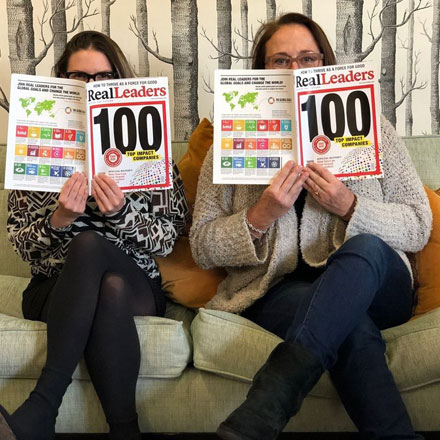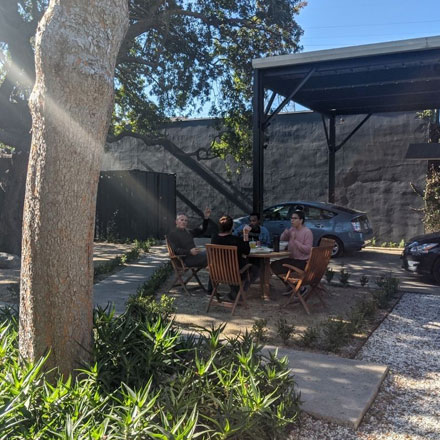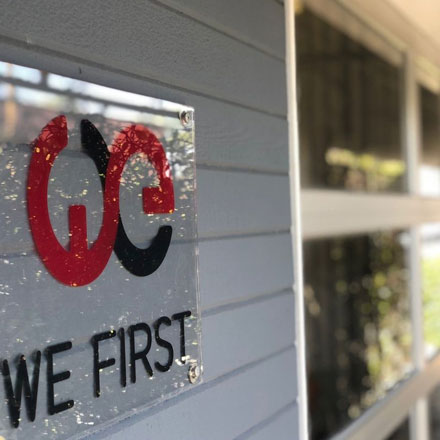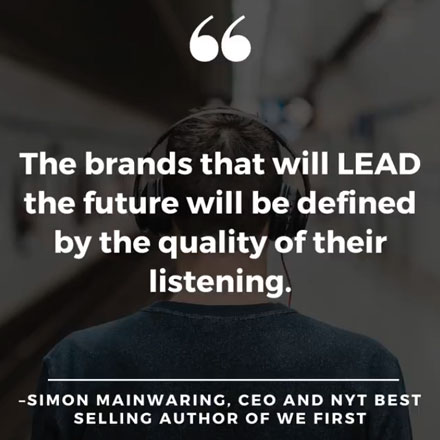
Purpose At Work
Bank On Impact: Amalgamated Enters Its Second Centennial Of Service
One hundred and one years ago when Amalgamated Bank was launched in New York City, its founders would not have been surprised to learn their brainchild would eventually be run by an Ethiopian-American woman: The bank has deep roots in progressive politics, workers’ and immigrants’ rights, and feminist ideology.
No surprise then to find President and CEO Priscilla Sims Brown at the helm today. American Banker’s 2023 Most Powerful Women in Banking award recipient, Forbes “50 Over 50: Money” winner 2022, CNBC Changemaker, and one of Crain’s New York Business “Notable Black Leaders, 2o22,” Brown is nonetheless one of the sector’s few Black leaders.
Brown and Amalgamated share a focus on values such as integrity, passion, collaboration, responsibility, proactivity, and equity and inclusion. Many banks, large and smaller, claim such pedigree and purpose. What separates Amalgamated Bank from the pack is what it uses its money for. Amalgamated’s assets belong to “people who care what their money does in the world,” according to Brown.
The Road to Realizing Impact in the Financial Services Sector
Brown sees Amalgamated the same way its constituents have for decades, as a socially responsible bank, where you can “Bank on Impact.” What that means is that “it empowers organizations and individuals to advance positive social change,” she says. “We help those who do good, do better.” Clients, community, and the planet all benefit from its practices. More specifically, Amalgamated serves six segments of changemakers: labor, sustainability, political, non-profit, philanthropic, and social advocacy clients.
Brown reflects on her professional voyage to get where she is today, heading a bank with such a clarified, articulated, and practiced “why.” She’s spent nearly all her career in the Financial Services space, including asset management and insurance. At Lincoln Financial Group, which when she started was a multi-line insurance company, she had a “very valuable experience … [which caused] a very big effect on my thinking about corporate citizenry. I was helping to transform Lincoln into a very focused financial services firm with very narrow products, primarily consumer driven from a B2B world to a B2C world.”
In that process, Brown confronted “the role we [in FS] play in society, recognizing that Lincoln was a firm with every leg of financial services that you can think of underneath its umbrella.”
At Lincoln, Brown honed her ideas and commitment to “being mindful of the impact — and this obviously predates all of the discussion we’ve had by now around climate — just being more aware of the footprint and the impact that every major company can have on the environment.”
One aspect under Brown’s remit at Lincoln was bolstering the “foundation and our engagement in the eight key cities we were in.” There, she increased her own interest in serving local communities. She carried this type of responsibility from Lincoln to Sun Life to AXA, and then ultimately to the Commonwealth Bank of Australia, that country’s largest bank.
Amalgamated’s vision — “banking that furthers economic, social, racial, and environmental justice” — was the perfect landing place for a person building a career as Brown was.
Social responsibility. Corporate citizenship. A quest to mitigate the environmental emergency we’re all facing. “Now it’s what I do on a full-time basis. So, this one corner of my world, which was to think about the role that companies play in society has now become what I do every day, all day.”
“The financial industry has an opportunity and responsibility to fund things that create change and make the world a better place,” says Brown. “We help our clients leverage the financial system to do this and want to be role models for other banks. It is why we invest in climate and do not invest in fossil fuels.”
Amalgamated by the Values: “Wanna be banked? Start a bank!”
The Certified B corporation is also the first publicly traded Financial Services company to incorporate as a Public Benefit Corporation.
It’s been a net zero enterprise for the past five years, backed by the Science Based Target Initiative. It’s a signatory or founding member of numerous collectives on climate action. Top rated for DE&I by numerous indices, such as transgender inclusion. It pioneered a strike fund for workers who need support while they exercise their collective bargaining rights. When a customer deposits money at Amalgamated, those assets support sustainable organizations and progressive causes, carefully vetted by many stakeholders.
Brown, in fact, describes Amalgamated’s vision as advancing economic, social, racial, and environmental causes not as a quest for equality or parity — but for “justice,” social justice, above all. Why the latter value?
“The word ‘justice’ is intentional,” says Brown. It’s about Amalgamated’s internal cultur , and the impact its assets exert on the world and people outside. “It’s intended to be humble. It’s intended to say, with humility, “We [in the banking sector] are part of the problem.” Look at, for example, the wealth gap and all the issues around income equality. So, we focus hard on making sure we were the first to set a $15 minimum wage, then a $20 minimum wage. Now, we don’t talk about ‘minimum,’ we talk about what is a living wage.” Most Amalgamated employees make more than $25 an hour. This is just one of the ways the bank serves hardworking families.
The bank has always been committed to workers’ rights. In fact, the bank was founded by the Amalgamated Clothing and Textile Workers union in 1923; and since then has always been dedicated to supporting workers by actively advocating for workers’ protections to promoting wage fairness and job creation. We believe strongly in a unionized workforce and the advancement of workers everywhere,” says Brown, “which means we’ll support our workforce, we’ll think about workforce development, we’ll think about workforce development, and offering resilient careers that are future fit to changes in technology, media, and behaviors.”
Reflecting on the Centennial & Projecting Ahead to the Next 100 Years
In spending a lot of time with a historian and putting together a book that takes people back over the 100 years of Amalgamated, certain leadership decisions loomed large in Brown’s reckoning. “There have been some major sea changes in the strategy around the work that Amalgamated Bank does,” she recounts. “Having started with clothing and textile workers, Eastern Europeans, women, who wanted to be banked and therefore, started a bank, there was an inflection point in the ’50s where they had started to understand that they needed to not only think about people who looked and acted like them, but if they were going to be true to their beginning, they needed to expand.”
“There was a senior vice president of the bank in that era who some people actually credit with coining the term ‘ESG’ back then. But his thought was that we’ve got to really embed all this [responsibility beyond profits] more into our lending practices. And I think about the weight of the decisions he had to make, which seem so obvious to all of us today, but were quite revolutionary then, and counterintuitive to anyone in the industry.”
“And so, I say to myself, ‘Okay, what am I doing in our own strategy today that is bigger than just building a better bank? What’s important in the next one hundred? Where have we taken steps back, and how can I accelerate the path forward? How can we have impact that’s bigger than the footprint of this bank?”
Those key questions have led to some impressive ideas and presage an exciting future for Amalgamated Bank. “Our $50 billion on the trust side and under $10 billion on the banking side, is certainly not big enough to have a huge dent in this problem. So, to really go there, you’ve got to get a little creative,” says Brown. “I mean, you’ve got to think about how do you dismantle the barriers to financial independence in the system? Is that a possibility? How do you challenge every truth that we hold in this business? And I’m sorry, I don’t want to get too far out there, but these are big questions that your centennial calls you to think about.”
“And one of the conclusions I’ve come to on this is that we must move beyond race. We must move beyond the current descriptors that have created the tribes and the polarization that we exist in today. I’m African, so I’m familiar with tribes and languages and the differences that create the problems in my own country, in Ethiopia.”
“So, how do we get beyond that?” she asks. “I force myself not to talk about the black racial wealth gap, even though we know who’s at the bottom of that rung. I try to really think about if we’re going to solve the problem, we’ve got to think about it for those in Appalachia, we’ve got to think about it for those on the Navajo reservation in the four corners. We know that if the system provides access to capital for disadvantaged groups, every group experiences better opportunities. If we raise the median income in this country, we will boost the national economy. We really have to think about how we create systemic change that can be picked up by everyone.”
A Model for the Industry
Most conservative estimates range from three to $6 trillion for the amount of capital that is required to get this country to its stated net-zero goal by 2050, Brown argues. “We just had a $27 billion greenhouse gas reduction fund announced by EPA and Treasury. That’s the public commitment. It’s going to be matched with seven times that in private capital and investments minimum to get there. Some proposals are up to ten times,” she reminds us.
“So, that’s a huge tailwind. If you think about that, and if you’ve got your climate folks sitting over in the corner doing contributions to a foundation or a charity as opposed to bringing them into the business to think about how you can capitalize on that, you are missing an opportunity. I don’t care if you are the government’s bank, a large multi-national bank, or whether you are a small community bank on the corner down the street. That’s an opportunity. And there are many just like that. And that’s, for me, what people are missing. They’re still in the old paradigm of separating the two,” separating “doing well, and doing good.”
“We’ve got those tailwinds behind us because of the influx of capital to climate and the influx of interest in the ESG areas,” Brown concludes. “Can we really create systems that are adaptable and transferable? Can we open source the answers to the problems that we’re finding as we go along?”
The next hundred years will tell — but Brown is banking and leading on making it happen much sooner.





